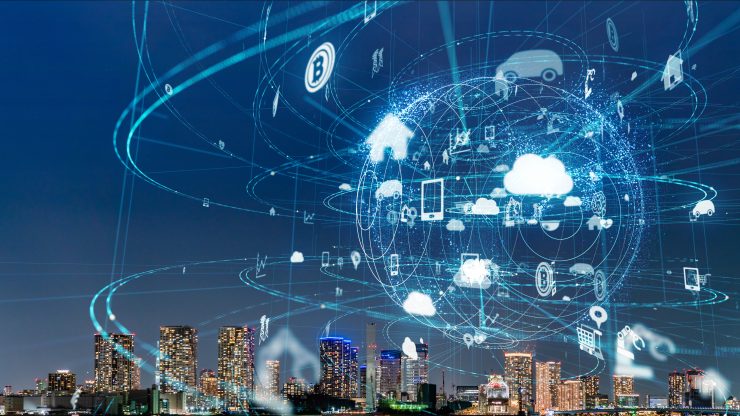There are more devices connected to the internet today than there are people in the world. This is all part of the Internet of Things, the next big technological revolution.
You have probably heard of the phrase Internet of Things, and you may have a basic understanding of what it means. But what does it really mean, and what impact will it have on the world and on you individually? Here is an insight into everything you need to know about the Internet of Things.
Defining the Internet of Things (IoT)
IoT is not a new concept. Discussion about IoT began in the 80s and 90s. Kevin Ashton was the first person to coin this phrase in 1999. In Ashton’s own words, “The IoT integrates the interconnectedness of human culture – our things – with the interconnectedness of our digital information system – the internet.”
Simply put, IoT refers to the concept of connecting virtually any device that has an on/off switch to the internet (and every device that can accommodate an in-built sensor). It facilitates to connection of objects to other objects and objects to people. The connected devices collect and share information, which is used to make them more efficient. A smart home is a great example of IoT in action.
How IoT Works
Back in the 80s and 90s, IoT was still a novel concept. It couldn’t be adopted back then because it was expensive to connect objects to the internet, and technology was not ready for such a massive undertaking.
Today, technology is ready for such an undertaking, and it is cheaper to connect objects to the internet. It began with the adoption of RFID tags, which are essentially low-power chips designed to facilitate wireless connection. Adoption of IPv6 has also greatly contributed to developments in this field, as this technology makes it possible to assign an IP address to virtually any device or object connected to the internet.
Above everything, however, is the increasing availability of broadband internet and wireless and cellular networking. It has also become cheaper and easier to integrate sensors – which are essential for connecting devices and objects to the internet – to devices that have an on/off switch.
Initially, IoT was mostly interesting to businesses – the phrase machine-to-machine, which is commonly used in business, still refers to the Internet of Things. The concept was welcomed as a way to maximize efficiency at the workplace. Today, however, the concept has been adopted virtually everywhere, including at home and in our streets. Soon, we will be surrounded by the Internet of Things everywhere we go.
Internet of Things Examples
Imagine waking up in the morning to freshly-brewed coffee because your alarm ‘talked’ to the coffee maker. Or picture yourself driving to a meeting, but because there is heavy traffic your car automatically notifies the second party that you will be late. All this is possible when such objects are connected to IoT. As long as these objects are connected to the internet and to each other, they can communicate in accordance to your needs and preferences, thus essentially making your day-to-day chores easier.
There are already plenty of smart devices out there that are connected to the Internet of Things. Smart plugs, smart smoke detectors, pet technology, and more all exist to make our lives easier.
Some cities are already adopting IoT technology in a bid to become more efficient. They are integrating sensors and modules to the streets (on sidewalks, roads, parks, seats, and virtually everything) to make this possible. The ultimate goal is to increase efficiency and reduce waste, which will eventually benefit the environment in wake of concerns regarding runaway pollution.
The Future of the Internet of Things
The IoT is set to become bigger and better with time, as reported by research giant Gartner. The cost of connecting to the internet is falling, and it is easier to integrate sensors into everyday objects. Additionally, the development of 5G technology is expected to contribute greatly to the development of IoT. Advances made in artificial intelligence technology will also further advances in this field.
Currently, there are many parties interested in benefiting from the expected benefits of the internet of things. These players, who mostly comprise telecommunication and tech giants, are also greatly contributing to the development of IoT. In fact, individuals like you and me may not have an option but to adopt IoT since it will be integrated virtually everywhere, including in our streets.
Quantifying the Internet of Things
So, exactly how big is the IoT? Put simply, it is many times bigger than the world’s human population, and bigger than anything that those who envisioned it could have imagined. Research and analysis company Gartner reports that there will be over 20 billion objects and devices connected to the Internet of Things by 2020. Other research companies have disputed this analysis, arguing that the number could be much higher, topping estimates of about 100 billion devices and objects.
Projections and estimations aside, there are over 10 billion objects and devices connected to the IoT today. There were about 8.4 billion devices connected to this platform in 2017, which was an uptick of about 30% up from 2016. About $2 trillion was spent on IoT connection in 2017, and this figure is steadily rising today.
The rule of thumb in the future will be that any device that can be connected to the internet should be connected. Hence, virtually everything will be connected to the grid in the future – if it can accommodate a sensor it qualifies for connection, and sensors can be integrated into virtually everything today.
Benefits of the Internet of Things to Businesses and Consumers
Data is one of the biggest assets that any business can have – there has been a lot of talk about how businesses buy and use people’s data. Considering that the Internet of Things will make it possible for ordinary objects to collect data, it is expected to benefit businesses more than any other sector. However, the individual benefits will depend on the business’ IoT application. The main benefit, however, will be that businesses will be more efficient when they collect data and use it to improve their operations.
Individuals like you and me will also benefit greatly from the IoT. It will make everything more convenient and ease your daily tasks and chores. You will know about everything regarding your home and immediate environment, and more objects and devices in your home will become smart. For instance, your thermostat may adjust temperature when you arrive, depending on your preferences.
Flaws of the Internet of Things
Wireless connections to the internet have become easier and cheaper, and humanity has reaped many benefits from this. However, the widespread connection to the digital world has elicited many concerns about individuals’ privacy and security. A hacker can learn everything about you by stealing sensitive data that you use digitally, such as your banking and medical information. So, what happens when virtually every object gets connected to the internet?
There is no dispute about the obvious benefits regarding the Internet of Things. However, its drivers have given little thought about privacy and security. Objects such as the toaster and coffee maker cannot be patched using cyber-security software, so they are vulnerable to hacking.
And, since these objects are connected to other objects in your home, this means that your home is vulnerable to hacking as well. Even worse is the fact that it is difficult to tell when these objects have been compromised, so you are essentially at the mercy of the hacker. All connected objects will be collecting data endlessly, so a hacker could have access to your whole life. It sounds scary, doesn’t it?
For instance, picture a power station whose objects are connected to the Internet of Things. A hacker may hack key objects connected to the platform and trick the operators into thinking that the systems are off base. This may lead the operator to change the systems (for example, by increasing temperatures), which will then have a catastrophic effect on all households served by the power station.
There is an even bigger risk that is often overlooked when talking about the Internet of Things: the risk of cyber warfare. It is an open secret that key world players, including the U.S., Russia, and China, have been conducting covert cyber warfare operations against each other. If things were to get out of hand, hacking into vulnerable objects connected to the Internet of Things could have devastating effects on individual home owners. In fact, the U.S. intelligence has warned American citizens that objects connected to the Internet of Things, such as thermostats, could be exploited against them.
Final Word
The Internet of Things will bridge the gap between the physical and digital worlds. It will ultimately make life easier and more efficient. Virtually every object with an on/off switch (and every object that can accommodate an in-built sensor) will be connected to the internet. Our homes and streets will become smart. Life, as we know it, could change for the better. However, we still have to get around the issue of security and privacy, which are the major flaws of the Internet of Things.







Add comment